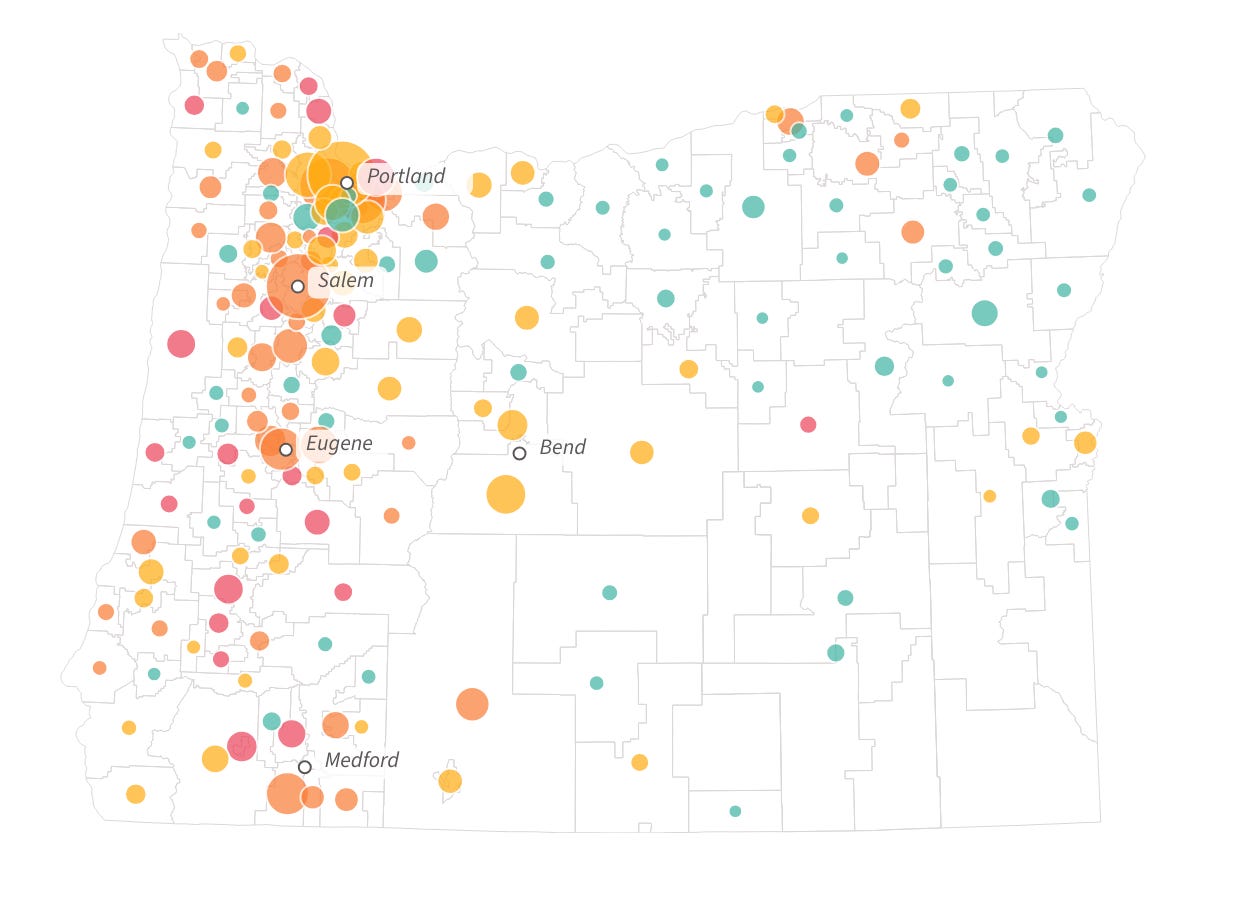New Data Shows How Oregon School Districts Approach Inclusion
Data from the 2023-24 school year was just released and I’ve updated the data explorer. It continues to show there’s enormous variation in how districts approach inclusion across the state. Some districts have developed systems that keep students with disabilities in regular classrooms for most of the day, while others rely heavily on separated settings.
What’s disheartening is to see that districts’ philosophies on educating students with disabilities are so fundamentally different, despite federal law mandating that all students be able to learn in the “least restrictive environment.” Research and data has shown over and over again that when schools prioritize inclusion, students with disabilities learn better, and there are benefits for general ed students, too. When schools lean toward separation, they’re often responding to ingrained practices and resource constraints, rather than what’s best for children.
These differences exist even for neighboring districts with similar demographics.
What this means for families. If you’re a parent trying to understand what your child’s school experience might look like, these patterns matter enormously. This data can help you:
See how your district compares to others
Understand whether your district tends toward inclusive or separate approaches
Identify districts that might serve as models for what’s possible
The resource challenge. One factor that complicates all of this: Oregon’s outdated funding system. The state caps special education funding at just 11% of students — the lowest cap in the nation (only five other states even still have a cap!) and unchanged for over 30 years. Meanwhile, districts like Portland and Salem-Keizer have 18% of their students identified as needing support.
This funding gap doesn’t excuse poor inclusion practices (some studies show that inclusion practices can actually cost less than segregated settings), but it does help explain why some districts struggle to provide appropriate supports in regular classroom settings.
I’m continuing to advocate alongside other parents for removing Oregon’s arbitrary funding cap. Ultimately, students deserve both inclusive practices AND adequate resources to make those practices successful.
Explore the data. The updated site now includes all the latest information. Take a look at your district, compare it to your neighbors, and see what the data reveals about the landcape of support in Oregon.


